Why is it that Lyme disease is so little understood, so hard to diagnose, and so frustratingly difficult to get treated? Such were the questions discussed last night at the first of the new Bay Area Lyme Foundation Speaker Series talks.
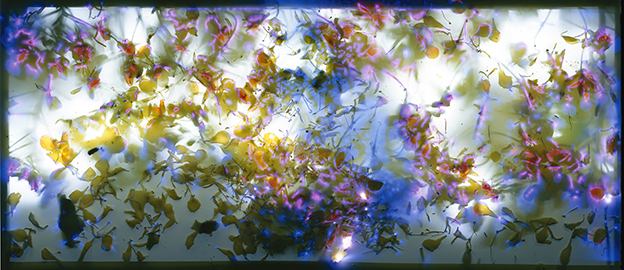
2014 Emerging Leader Award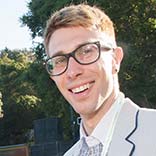 recipient Jerome Bouquet, PhD, UCSF, began the program with a compelling overview of the history of Lyme disease and its pathology, highlighting some of the complicated attributes of the Lyme-causing spirochete and the manifestations of its infection. He touched on promising new technologies like the Tick Chip and the IBIS-developed Iridica, which use unbiased DNA amplification and multiplex assays with greater sensitivity (and more immediate results) than traditional methods. He also described promising developments in transcriptomics that have illustrated the lingering effects of the disease up to six months after treatment, and
recipient Jerome Bouquet, PhD, UCSF, began the program with a compelling overview of the history of Lyme disease and its pathology, highlighting some of the complicated attributes of the Lyme-causing spirochete and the manifestations of its infection. He touched on promising new technologies like the Tick Chip and the IBIS-developed Iridica, which use unbiased DNA amplification and multiplex assays with greater sensitivity (and more immediate results) than traditional methods. He also described promising developments in transcriptomics that have illustrated the lingering effects of the disease up to six months after treatment, and
metabolomics that may point to new biomarkers with greater sensitivity and specificity than existing diagnostics. But a good part of Bouquet’s talk was about the frustratingly complex nature of the bacteria and its remarkable ability to elude researchers and clinicians alike. Lyme bacteria is unique in its ability to change over time, to infect and permeate in relatively low numbers, and to generate a wide-range of symptoms that resemble so many other illnesses, making accurate diagnosis challenging. Combine that with limited public awareness, and increasing geographic spread, and you have the conditions that have brought so many patients years of suffering and disability.
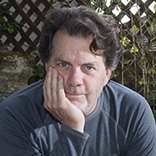 Robert Buelteman, a widely-acclaimed Bay Area nature photographer, who has personally struggled through an 8-year battle with Lyme disease, then shared his personal journey and observations about how perceptions of the illness further inhibit successful diagnosis and treatment. He talked about the desire to not share one’s illness, of the frustration and the “shame” he experienced as he first dealt with both mentally and physically disabling symptoms. He also shared candid reflections about well-meaning friends and colleagues who upon eventually learning of his illness encouraged him to leverage his suffering just as Frida Kahlo, Toulouse-Lautrec, Monet, and many other great artists have done. “This effort by well-intentioned friends to buck-up … by converting personal suffering into some kind of ‘growth experience’ seldom plays well. When you lack the energy to get out of bed, are not sure when or where you are, have no recollection of the preceding day, you don’t have to look at Maslow’s hierarchy of needs to know you are in big trouble.” Empathy can be challenging when most can’t see the problem.
Robert Buelteman, a widely-acclaimed Bay Area nature photographer, who has personally struggled through an 8-year battle with Lyme disease, then shared his personal journey and observations about how perceptions of the illness further inhibit successful diagnosis and treatment. He talked about the desire to not share one’s illness, of the frustration and the “shame” he experienced as he first dealt with both mentally and physically disabling symptoms. He also shared candid reflections about well-meaning friends and colleagues who upon eventually learning of his illness encouraged him to leverage his suffering just as Frida Kahlo, Toulouse-Lautrec, Monet, and many other great artists have done. “This effort by well-intentioned friends to buck-up … by converting personal suffering into some kind of ‘growth experience’ seldom plays well. When you lack the energy to get out of bed, are not sure when or where you are, have no recollection of the preceding day, you don’t have to look at Maslow’s hierarchy of needs to know you are in big trouble.” Empathy can be challenging when most can’t see the problem.
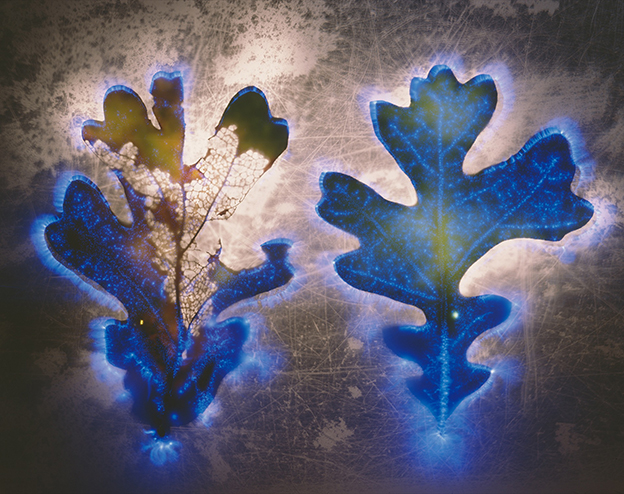
But Buelteman also shared reflections of just how the experience and the struggle has also provided him creative fulfillment in better understanding the importance of the journey and of appreciating this life “as it is, exactly as it is.” He explained, “I am more forgiving and compassionate towards others as well as myself, I am less concerned about what others think of me, I am more appreciative of this life of mine, in short, I have found new freedom to be.”
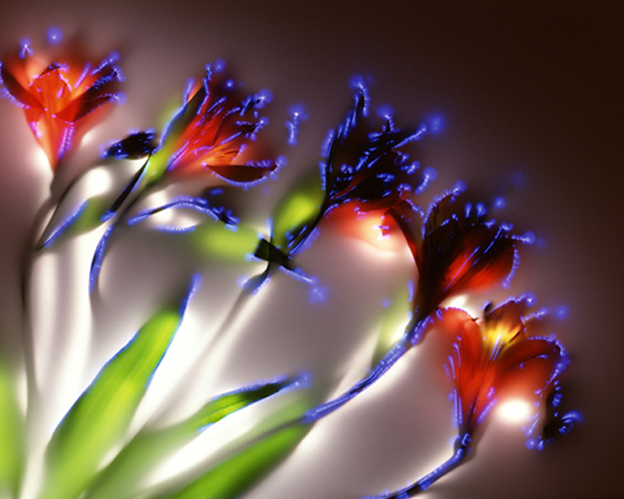
As the Huffington Post describes, “Robert Buelteman is not your average nature photographer. The California-based artist shocks flowers and plant life with thousands of electric volts, capturing an entrancing image of the energy streaming through them…” His artwork is striking for its emotion and creativity and for its communicativeness. While his artwork was not the focus of the evening’s program, he did share how his work has been affected and the remarkable ways in which his creative process somehow intuited more and earlier than his clinical diagnosis had revealed — influencing the art in ways that are only now revealing themselves to be directly related to his medical prognosis.
Lyme is a frustrating and debilitating illness caused by a highly-elusive bacteria. Hearing about the challenging personal and professional struggles of those facing this disease is both daunting and inspiring. Broadening the dialogue is an important way inspire new thinking — our best hope for finding a accurate diagnostic and cure.
Join us at the next Speaker Series talk on Wednesday, December 2nd featuring Andreas Kogelnick, talking about the upcoming clinical trial for a new combination thereapy, and Shelby Anderson, med student, Lyme patient, and creator of the #Lime4Lyme challenge.
*****
Robert Buelteman is indeed not your average nature photographer. To learn more about his remarkable work and his experience with Lyme disease, visit www.buelteman.com.
Jerome Bouquet, PhD, is a post doctoral fellow at UCSF and a Bay Area Lyme supported scientist, actively pursuing new diagnostic technologies and solutions. You can read more about his current work here.
All images are property and courtesy of the artist, Robert Buelteman.